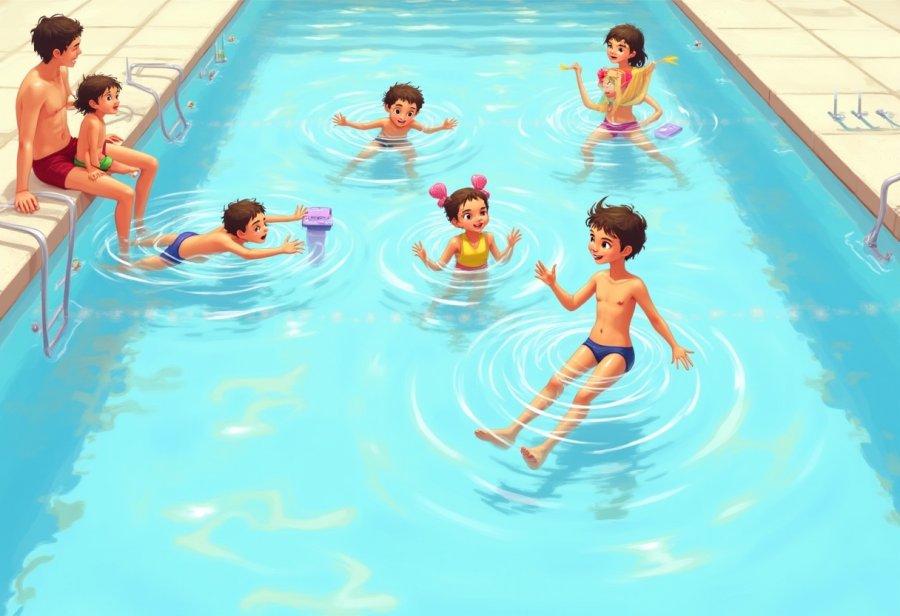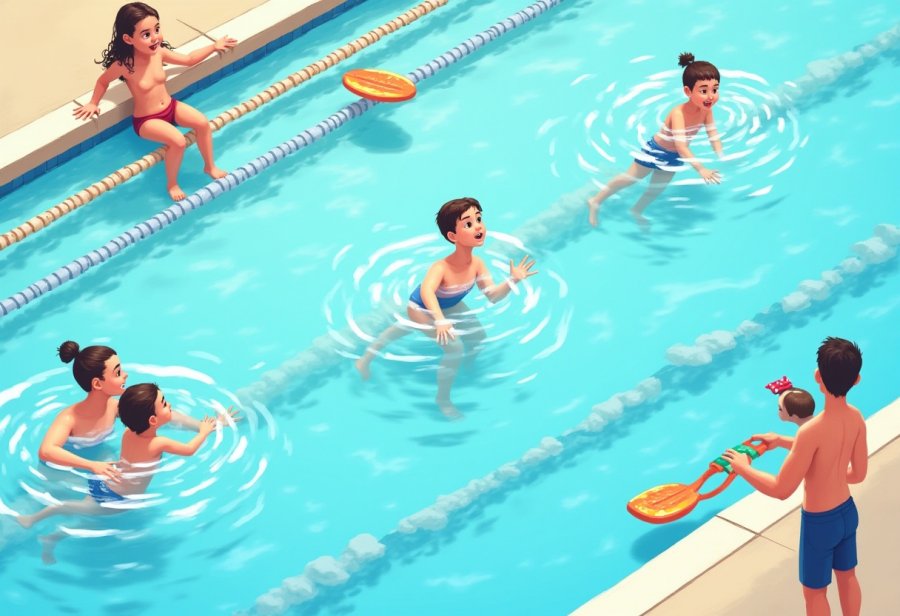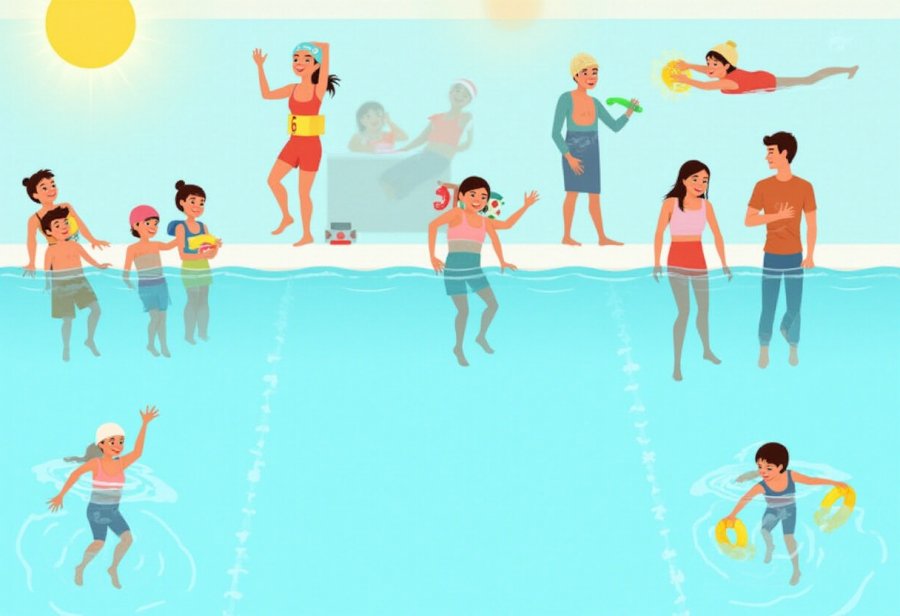What if the biggest obstacle to learning to swim isn’t skill or age, but simply taking that first courageous step? This inspiring journey reveals that water confidence is within reach at any stage of life, transforming fear into freedom through patience, support, and gradual progress. For many adults, the idea of entering the water can evoke anxiety and doubt, yet overcoming these mental barriers opens the door to safety, independence, and joy. The narrative emphasizes that small victories—wading, floating, breathing—build trust in oneself and redefine water from a source of fear to a space of possibility. As confidence grows, everyday interactions with water become safer and more enjoyable, expanding horizons for recreation and self-assurance. Ultimately, this story challenges perceptions about age and ability, illustrating how resilience, mindset, and support can turn initial trepidation into a lifelong journey of growth and empowerment.

Transform Your Life: The Power of Learning to Swim at Any Age
Learning to swim isn’t just for kids or those who grew up near water; it’s a skill that anyone can develop at any age. For many adults, the idea of stepping into a pool or wading into open water can feel intimidating, even frightening. That’s completely normal—every swimmer started somewhere, often with a mix of nervousness and curiosity. The key is to see these initial feelings as part of the process, not as a barrier. With patience and a gentle approach, water skills can be learned and improved at any stage of life.
Starting small is crucial. It might mean just wading into shallow water, splashing your face, or simply standing at the pool’s edge feeling comfortable. These small victories are the foundation for more advanced skills and help you build trust in your body and in water. Overcoming mental barriers begins with these manageable steps, which gradually turn water from an intimidating obstacle into a space of opportunity.
As confidence grows, the focus shifts from overcoming fear to discovering what your body is capable of. Learning to float, breathe steadily, or kick with purpose can feel like real breakthroughs. Each step forward reminds us that it’s never too late to learn something new, and that every small success adds to a sense of safety and independence. Suddenly, the water that once seemed threatening begins to feel like a place of enjoyment and adventure.
This transformation isn’t just about physical ability—it’s about changing how you see yourself in relation to water. Many adults find that once they take that first step, their perspective shifts dramatically. The pool or lake becomes less a place of danger and more a space for fun, health, and connection. Every splash and stroke reinforces that water is a resource for growth, rather than a source of fear.
The journey to water confidence is unique for everyone, but it’s driven by a simple truth: starting is often the hardest part. Once you overcome that initial hesitation, progress tends to accelerate. Support from instructors, friends, or family makes this process more approachable and keeps motivation high, especially when setbacks occur. Each small step, each new skill, reinforces that water is a place of possibility, not limitation.
Learning to swim as an adult isn’t just about strokes; it’s about reclaiming control and embracing new challenges. It’s a process of overcoming fears, discovering resilience, and proving that change is possible at any age. The water, once a symbol of anxiety, becomes a space of confidence and joy. The transformation begins with that first brave step—and from there, it opens up a world of new experiences and personal growth.
Conquer Water Anxiety: Strategies to Build Unshakeable Confidence
Building water confidence often begins with shifting how you think about the water itself. Instead of seeing it as a source of fear, try to view it as a space for learning and personal growth. This mental change transforms anxiety into curiosity, making it easier to take those initial small steps—whether it’s wading into shallow water, splashing your face, or simply standing at the pool’s edge feeling safe. These simple actions help your body get accustomed to water’s sensations and start building trust in your ability to manage being in it.
Practicing deep breathing and positive self-talk can make a significant difference. When nerves surface, slow, deliberate breaths soothe your nervous system and reduce panic. Reminding yourself with phrases like “I am safe” or “I can do this” reinforces your confidence and rewires your responses to water. When combined with gradual exposure, these techniques ensure you’re steadily increasing your comfort level without feeling overwhelmed. Over time, your mind and body begin to associate water with calmness instead of fear.
Having a supportive environment is crucial. Whether it’s an understanding instructor, a patient friend, or family members cheering you on, positive encouragement keeps motivation high. Supportive guidance helps ease anxiety if it spikes, gently reminding you that progress isn’t always linear. Celebrate small wins, like floating unsupported or holding your breath underwater briefly—these moments add up, boosting your belief that you’re capable of more than you think.
Breaking water fears into manageable parts makes the journey less daunting. Start by simply stepping into the shallow end and focusing on your breath. Next, try floating on your back or stomach with support, gradually building confidence with each attempt. Recognizing and celebrating these small victories creates a sense of achievement that fuels further progress. With consistent effort, these incremental steps foster a stronger trust in your body and your ability to stay calm in water.
Developing water confidence isn’t about overnight transformation. It’s a process of patience, persistence, and trusting that each small step counts. As you practice these strategies, nervousness diminishes and your trust in water grows. Eventually, those initial anxieties give way to a sense of control and calmness, paving the way for more advanced skills. Building this trust creates a solid foundation for conquering swimming anxiety at any age and turning water into a space of confidence and joy.
This journey is as much about mindset as it is about technique. Replacing fear with curiosity transforms how you approach water, making every splash an opportunity for growth. The more you focus on progress rather than perfection, the easier it becomes to see water as a place of potential rather than threat. With each step forward, you reinforce your ability to handle water calmly and confidently—no matter your age or experience level.

Breaking Barriers: Overcoming Challenges and Misconceptions About Adult Swimming
Many adults face skepticism when they consider learning to swim later in life. Some question whether it’s truly possible for someone beyond childhood to pick up water skills, especially if they’ve never learned before or have long-standing fears. This doubt can create a mental barrier that makes the first step seem even more daunting. It’s easy to imagine that age, physical limitations, or past experiences might hold you back, but these concerns shouldn’t stop you from trying.
There’s also a common misconception that swimming isn’t safe or suitable for older learners. Some argue that health issues or physical constraints make it too risky or too difficult to learn at this stage. While it’s wise to consult a doctor if you have concerns, many of these obstacles can be managed with modified techniques and patience. Safe, supportive instruction makes the journey possible and enjoyable, regardless of age.
Community perceptions sometimes reinforce doubts about adult swimming lessons. In some places, there’s a stigma attached to learning later in life—people might see it as unnecessary or even embarrassing. This attitude can discourage many from taking that first step. However, awareness of water safety and the health benefits of swimming are gradually changing these outdated views, especially as more success stories of adult learners emerge.
Fear of failure or embarrassment tends to be one of the biggest hurdles. Adults often worry about struggling in front of others or not progressing quickly enough. That fear can lead to avoidance, but it’s important to remember that everyone learns at their own pace. Supportive instructors and a patient environment help normalize setbacks, emphasizing that mistakes are part of learning and nothing to be ashamed of.
Some critics argue that the time and effort required to learn as an adult might not be worth it, especially if fears have been accepted for years. But this perspective overlooks the critical safety and health benefits that come with water confidence. Learning to swim isn’t just about strokes—it’s about gaining a vital life skill that can prevent accidents and foster independence. The investment pays off far beyond the pool.
Logistical barriers like limited access to pools or affordable instruction can also seem insurmountable. Fortunately, many communities now offer low-cost or even free adult classes, and online resources can complement in-person lessons. Finding flexible options makes water confidence more accessible, helping more adults overcome these practical challenges.
Ultimately, the biggest obstacle often isn’t physical but mental. Overcoming doubts about your ability and embracing the learning process can open doors you never thought possible. With support and persistence, you can challenge these barriers and turn water fears into a new source of strength. The journey to water confidence is as much about mindset as it is about technique—once you start, the possibilities are endless.
Everyday Wins: How Water Confidence Enhances Safety and Joy in Daily Life
Being confident in the water extends far beyond swimming laps; it can significantly improve everyday safety and open up new possibilities for enjoyment. For example, if you’re at the beach or pool with family, knowing how to float or tread water can prevent panic if you unexpectedly find yourself in deeper water. These skills turn potentially stressful moments into manageable ones, giving you peace of mind and a sense of control. Similarly, during outdoor adventures, crossing shallow streams or wading into lakes becomes less intimidating when you trust your water skills, making spontaneous trips more fun and less fraught with worry.
Basic water confidence also simplifies routine household water situations. Whether helping a child in the bath, filling buckets, or managing water around the house, feeling at ease in water reduces the risk of accidents and makes these everyday tasks safer. When water is no longer a source of anxiety, you’re more likely to approach chores calmly and efficiently, transforming what once felt like a hazard into an opportunity for confidence and control.
Beyond safety, water confidence unlocks a wide range of recreational activities. Participating in pool parties, kayaking, or paddleboarding becomes more inviting when you’re not held back by fear. Trust in your abilities encourages active participation, turning water-based outings into memorable experiences. Trying new adventures, like snorkeling or swimming in open water, becomes accessible and enjoyable—activities that once seemed out of reach now feel natural and exciting. Water stops being a space of anxiety and becomes a playground of exploration.
Many communities now offer supportive programs aimed at making swimming accessible for everyone. Engaging in these classes not only reinforces your skills but also boosts your confidence in familiar and safe settings. These environments emphasize gradual progress and safety, helping you carry that confidence into daily water encounters with family and friends. Over time, small steps taken in these supportive spaces translate into a genuine sense of independence and joy in water.
Building water confidence pays dividends for overall well-being. When you’re comfortable in water, activities like water aerobics, swimming laps, or simply playing in the pool become regular parts of your routine. These activities are gentle on joints and excellent for cardiovascular health, strength, and mood. As water becomes a familiar and enjoyable environment, your overall health and independence improve. Confidence in the water isn’t just about pool safety—it’s a gateway to a healthier, more active lifestyle that enriches daily life and fosters a sense of resilience beyond the pool.

From Fear to Freedom: Embrace the Water Confidence Journey and Reclaim Your Power
Taking that first brave step into the water often marks a turning point that can reshape how you see yourself and your abilities. It’s the moment when fears begin to fade, replaced by a sense of possibility and growth. Many adults who hesitated for years discover that once they finally make that leap, their perception of water—and themselves—shifts dramatically. What once seemed like an insurmountable obstacle becomes a manageable challenge, opening doors to new experiences and a renewed sense of freedom.
Learning to swim as an adult isn’t just about acquiring a new skill; it’s about transforming your mindset. Overcoming fears and taking that initial plunge reveals a resilience you might not have realized you possessed. Each small victory—whether floating, breathing steadily, or swimming a few strokes—builds confidence and reinforces that you’re capable of more than you thought. These moments of success serve as stepping stones, fueling your motivation to push further and explore what’s possible.
As your water confidence grows, so does your independence. Tasks that once seemed daunting—helping a child in the bath, crossing a shallow stream, or entering a hot tub—become natural and safe. That trust in your abilities extends beyond the pool or lake, influencing how you approach water-related situations in daily life. Water transitions from a source of anxiety to a space of joy and discovery, turning fear into freedom.
There’s a profound emotional shift that accompanies this journey. Facing and overcoming fears fosters a sense of accomplishment that boosts self-esteem far beyond the water. It proves that age and experience aren’t barriers to growth. Every step forward, no matter how small, affirms your capacity for change and resilience. This renewed confidence often spills over into other areas, encouraging an open, adaptable attitude toward new challenges.
This journey is deeply personal, yet the common thread is courage. That first brave step, often the hardest, unlocks a world of possibilities. It reminds us that the barriers we perceive are often only in our minds. Once we push past hesitation, water becomes a space of potential rather than fear. Each splash and stroke is a testament to your strength and willingness to grow, marking the beginning of a lifelong transformation.
Looking back, it becomes clear that embracing water confidence isn’t just about swimming; it’s about reclaiming control and opening yourself to new horizons. The journey teaches that fears are often illusions, and with persistence, they can be overcome. Every small victory in the water is a reflection of your resilience, proving that change is always within reach—at any age. The real reward lies in the confidence and freedom that carry you beyond the pool, into a richer, more adventurous life.